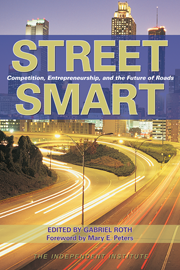Next Wednesday, on October 5, 2005, traffic officials from Alameda County will host a public meeting in Fremont to assess the support for HOT lanes on a fourteen-mile stretch of route I-680 from Highway 84 to Highway 237. What are HOT lanes? Should they be supported? Are the present proposals the best that can be envisaged?
What are HOT lanes?
HOT is an acronym for “High-Occupancy or Toll”, and “HOT lanes” are traffic lanes open only to High-Occupancy vehicles (variously defined) and to vehicles for which tolls are paid. The tolls are collected electronically, with road users’ accounts being debited without vehicles having to stop. Accounts are identified by credit card sized windshield units carrying unique identification codes. Tolls vary by time of day to ensure congestion-free travel at all times. Variable tolls encourage road users to shift their trips from more-congested to less-congested periods; or to other routes; or to car-pool. To the extent that trips cannot be shifted from the peak, high tolls are needed to pay for the facilities required to meet peak demands.
The first HOT lanes anywhere were opened in 1995, in the median of a 10-mile stretch of heavily traveled State Route 91, about 30 miles east of Los Angeles. Toll rates vary from $1 at night to $7.00 at the most congested travel period (Friday afternoons), and are changed periodically to ensure the lanes remain free flowing. The Express lanes became popular, and research shows that all income groups use them occasionally, women more than men. Subsequently, HOT lanes were opened in San Diego (1999), Minneapolis (2005), and are being planned for the Washington DC area.
Gainers and losers from HOT lanes
The HOT lanes currently operating were established either by being custom-built for the purpose (as on California’s SR-91) or by conversion from under-used HOV lanes (as on in San Diego, and as proposed for I-680). Road users who voluntarily choose to use them are obviously gainers, but those on parallel roads who choose not to use the priced lanes also gain, because of reduced congestion on the free lanes. Those who provide the HOT lane facilities gain revenues, which, so far, exceed their additional costs.
Who loses? Nobody! This is a win-win-win situation for all concerned, and should obviously be supported at the October 5 public meeting.
Would low-income people be disadvantaged?
Some object to HOT lanes because they “unfairly” benefit those with high incomes. This objection seems misplaced, for two reasons:
- First, HOT lanes speed up buses and vanpools, and their low-income patrons.
- Second, people of all income classes benefit from the choice of congestion-free travel, because all of us sometimes cannot afford to be late. Indeed, it is possible that low-income workers have more to lose from being late for work than their bosses.
How might the present proposals be improved upon?
The weakness in the current plan is the proposal to exempt car pools from tolls. It is understandable that the authorities are reluctant to eliminate an existing privilege to carpoolers, but retention of this perk has two disadvantages:
- First, as no reliable method has been found to count the occupants of all moving vehicles, enforcement requires that vehicles be stopped if the number of their occupants is in doubt. This is bad for public relations and particularly disruptive on busy roads.
- Second, as more HOVs are allowed toll-free, possibly to be followed by electrically powered vehicles, hybrid vehicles, low polluters, ambulances, fire-engines; police cars; and government-owned vehicles; the financial bases of the HOT lanes get weaker. The immediate effect is that tolls required to maintain congestion-free travel become higher on other vehicles than they would otherwise have been. In the long term, as the financial viability of HOT lanes weakens, fewer will be provided.
If exemptions are considered desirable, it would be better to confine them to readily identifiable vehicles such as buses or vanpools, irrespective of the number of occupants.
Alameda County deserves praise for considering a proposal that would give some of the travelers on its roads the choice of less-congested travel. Those who believe in the efficacy of free markets hope that this bold proposal is approved; that it soon gets implemented; that the operation is popular with road users; and that application to other roads follows quickly.








